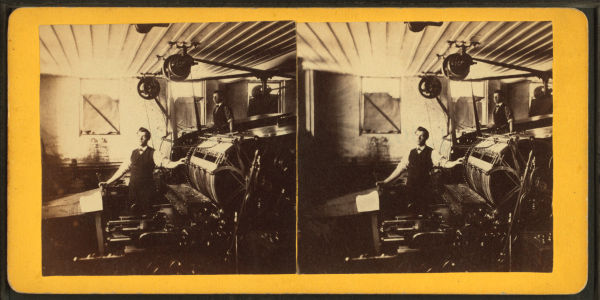Indramat drives and motion control are perfect for printing, which is why you find so many Indramat systems in the printing industry. But the printing industry now isn’t the same as the printing industry of the past.
Sometimes it’s easy to take automated tasks, like those found in printing, for granted. You think nothing of the speed, precision, and ease with which industrial machinery carries out those seemingly simple tasks. That’s why it’s good to occasionally remind yourself of how far we’ve come and how remarkable motion control truly is.
Before the printing press, people had to dedicated tens to hundreds of man hours scribing books by hand. This, of course, resulted in inconsistencies within texts, as well as limited availability of books.
Next came a process known as woodcutting, where a person would carve mirrored text onto a block of wood, dip it in ink, and press the text onto a page. The carving was the time-consuming part, and many pages could be printed before the block had to be cut again. This meant that texts could be reproduced faster than by hand, but the process was still time consuming.
It wasn’t until 1440 when Johannes Gutenberg invented the printing press that printing really got cooking. Gutenberg invented the first machine that used moveable metal type. The letters could be arranged for one page, rearranged for the next, and so on. This was exponentially faster than carving individual wooden blocks for each page of text.
Thanks to Gutenberg’s groundwork, printing really took off. By 1500 there were more than 15 million printed books in Europe. Before the advent of the printing press, very few people were literate. With the increased availability of printed works, more people had access to written words, and the literacy rate grew.
There wasn’t much change in the printing process over the next few hundred years. The rotary press was invented in the early 19th century, and the electric motor was introduced into printing in 1837, but nothing revolutionized printing until nearly the 20th century.
In 1886 , the linotype composing machine was invented. Unlike Gutenberg’s press which required a person to manually set individual letters in place before printing, the linotype machine allowed entire lines of type to be set by a keyboard.
By the 1930s, printing began resembling what we recognize printing as today. By 1938 light copying was invented, and by the 1950s computers were being used in the printing process. Then came Indramat.
The introduction of servo motors to the printing industry is the most recent revolution. Servo motors brought unprecedented speed, precision, and consistency to the printing industry.
